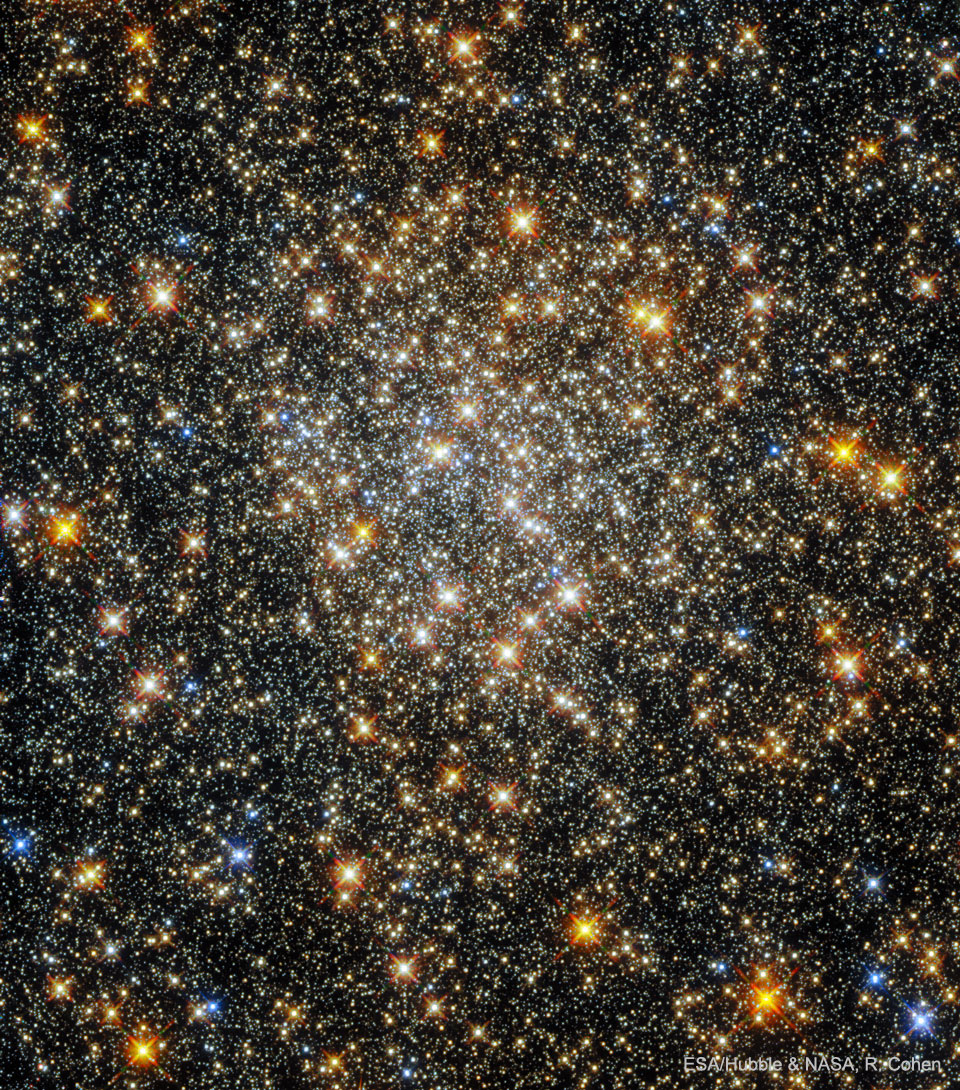帕洛玛玛6:球状星团
(原标题: Palomar 6: Globular Star Cluster)
2021-10-19
浏览次数: 129
这个巨大的恒星球是从哪里来的?帕洛马6号是我们银河系中幸存下来的大约200个球状星团之一。这些球状星球比我们的太阳更古老,也比银河系盘面上的大多数恒星更古老。据估计,帕洛玛6号本身大约有125亿年的历史,如此古老,以至于它接近并限制了整个宇宙的年龄。帕洛玛玛6号大约有50万颗恒星,距离我们约2.5万光年,但离银河系中心不远。在这个距离上,哈勃太空望远镜拍摄的这张清晰的图像跨度约为15光年。经过大量的研究,包括哈勃望远镜的图像,一个主要的起源假设是,帕洛马6是在环绕银河系中心的恒星中央凸起中产生并存活至今的,而不是在遥远的星系晕中,而现在大多数球状星团都是在遥远的星系晕中发现的。
查看原文解释
Where did this big ball of stars come from? Palomar 6 is one of about 200 globular clusters of stars that survive in our Milky Way Galaxy. These spherical star-balls are older than our Sun as well as older than most stars that orbit in our galaxy's disk. Palomar 6 itself is estimated to be about 12.5 billion years old, so old that it is close to -- and so constrains -- the age of the entire universe. Containing about 500,000 stars, Palomar 6 lies about 25,000 light years away, but not very far from our galaxy's center. At that distance, this sharp image from the Hubble Space Telescope spans about 15 light-years. After much study including images from Hubble, a leading origin hypothesis is that Palomar 6 was created -- and survives today -- in the central bulge of stars that surround the Milky Way's center, not in the distant galactic halo where most other globular clusters are now found.
